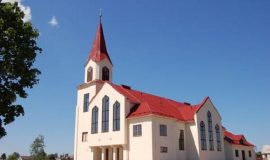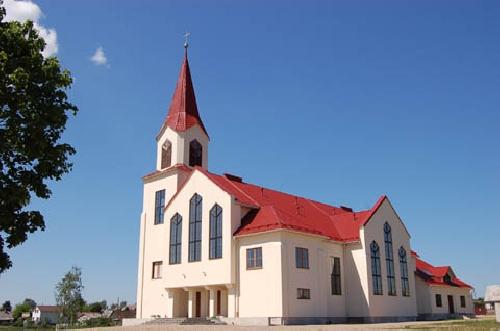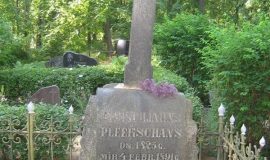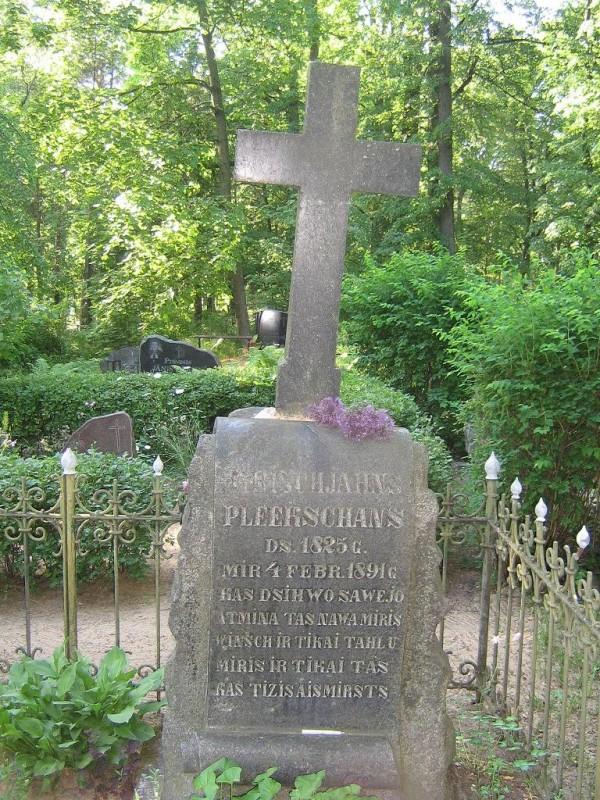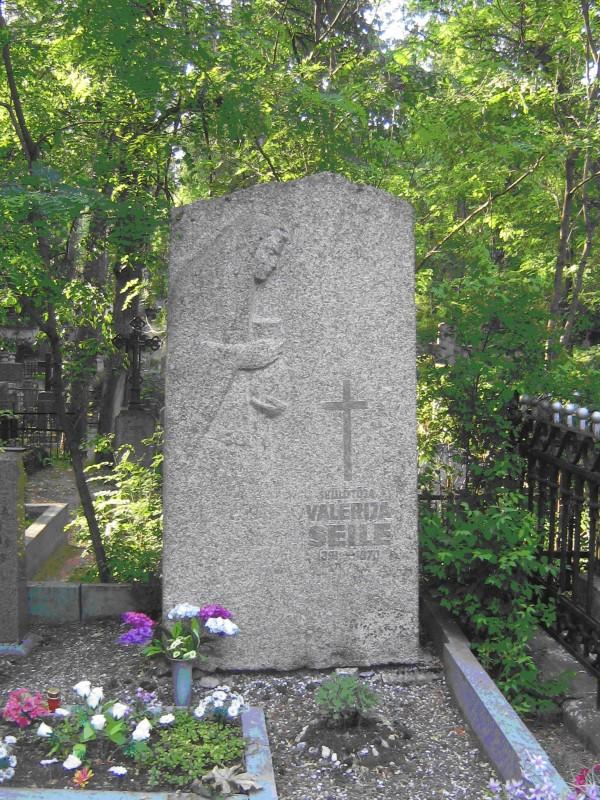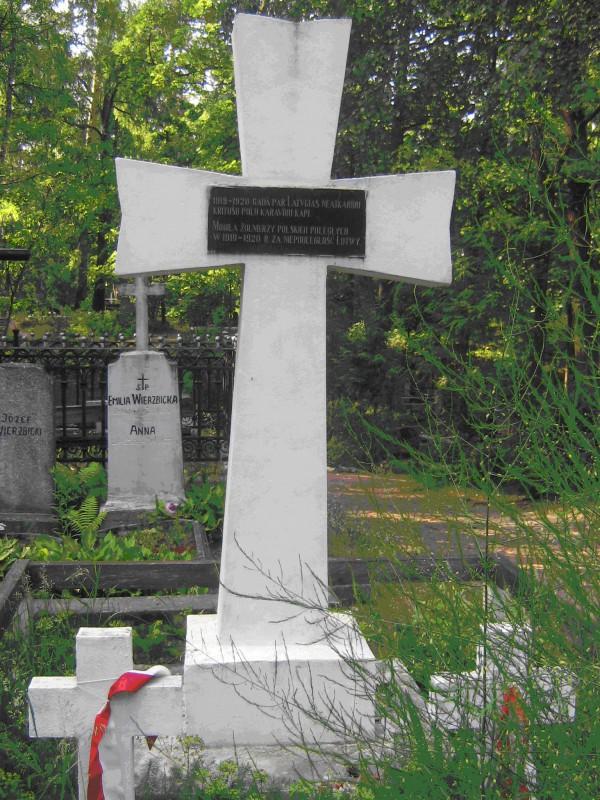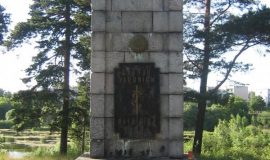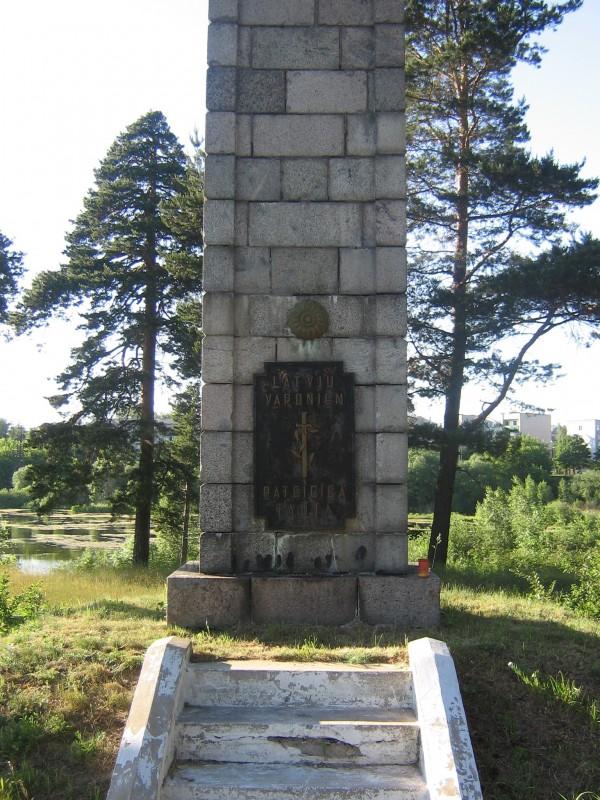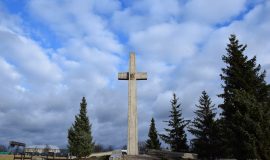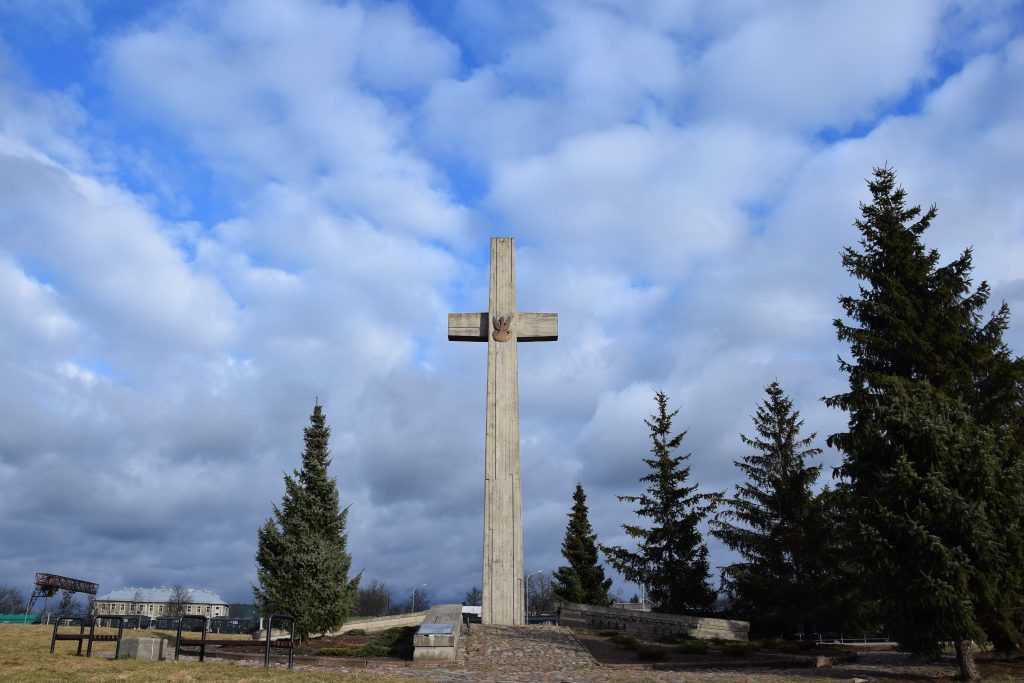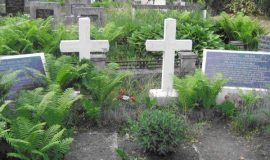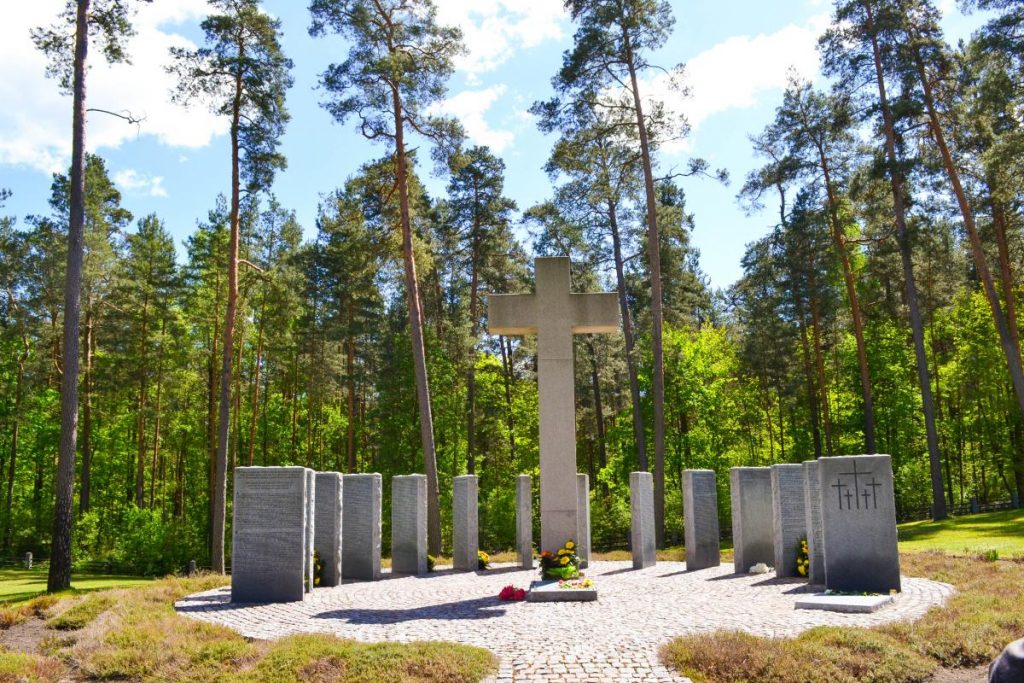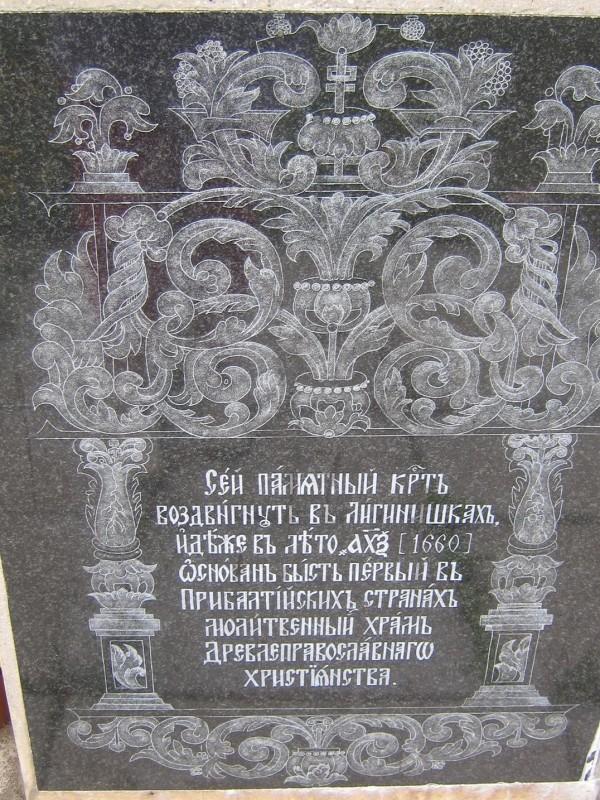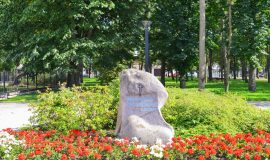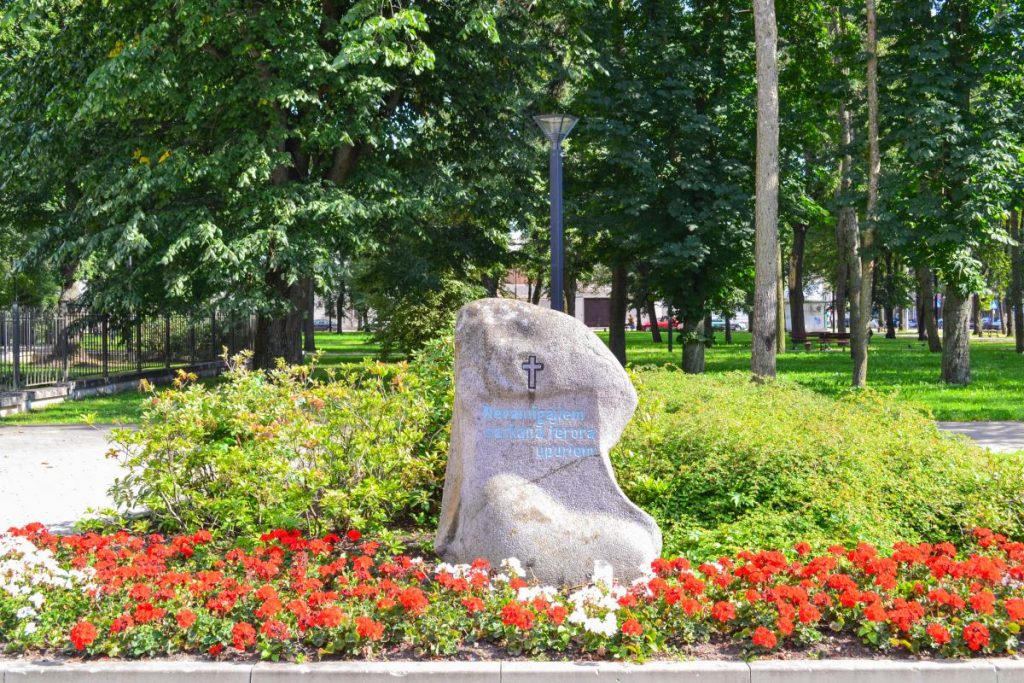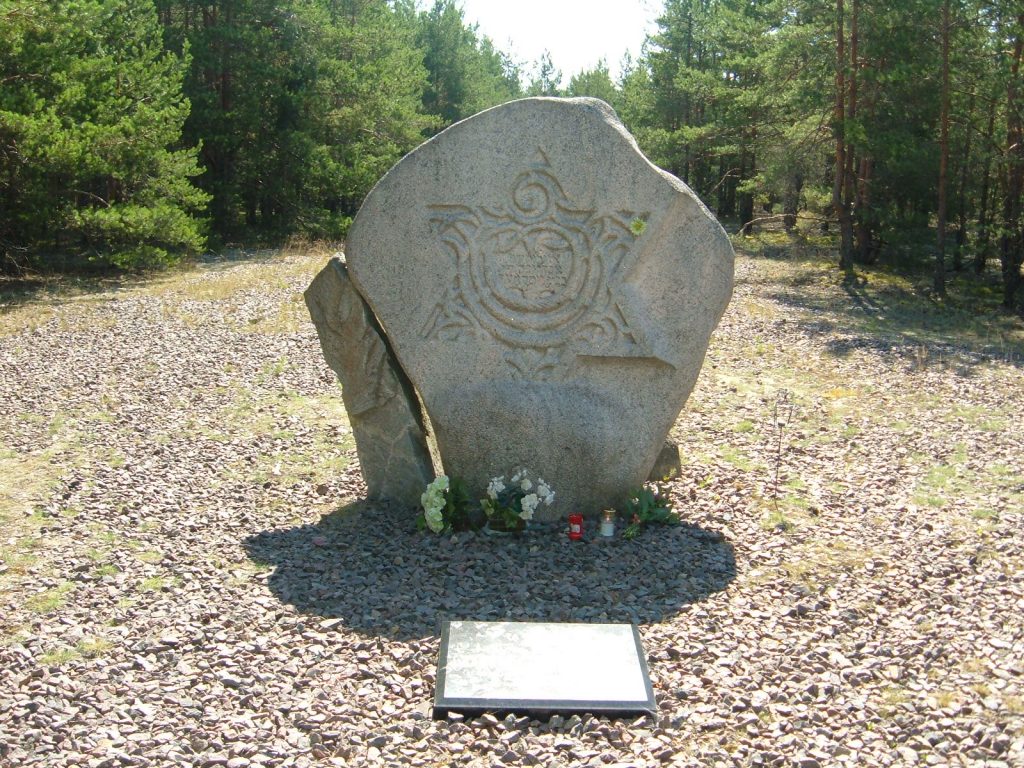The church in the urban landscape is distinguished by its pointed tower made in the Gothic style and by light finishing of the facade. In addition, this project combines classical and modern, as the temple of God is located near the cultural and historic wooden building which is typical for Daugavpils.
Objekta vieta: City/District
3
The Grave of Latvian Poet Rainis Father Krishjanis Pliekshan
The father of the poet Rainis Krishjanis Pliekshan leased several manor in the nowadays Daugavpils region territory – in Birkineli, Randene and in Vasiljovo. He died in 1891 and was buried in Daugavpils Lutheran cemetery.
The Grave of Education Officer Valerija Seile (1891-1970)
Valerija Seile (1891-1970) was an educator, publicist, bibliographer. She was the first Constituent Assembly Member, the director of Daugavpils Teacher Institute.
Graves of soldiers of Polish army fallen in Latvian fight for freedom at Daugavpils Catholic cemetery
At the right side of Daugavpils Catholic cemetery, the graves of Polish army soldiers are marked with a marble plate and a cross. There is an inscription in Polish on a tomb plate: “Tomb of the unknown soldier”. On January 21 in 1920 Polish soldiers from Daugavpils Polish military hospital 101 (Warsaw Street) were buried there.
Warrior’s Cemetery of Latvian Army Soldiers Killed in Latvia Liberty Battles
The mass grave of fallen in Latgalian battlefront in 1920 Latvian army soldiers of Latvian fight for freedom is located in Daugavpils Lutheran cemetery. At this place on June 22 in 1928, the President Gustav Zemgals opened a granite monument, which was created by architect Alexander Birzenieks.
Memorial place of graves of soldiers of Polish army of the 1st Legion Regiment
Graves of the soldiers of the 1st Legion Regiment of Polish army in Slobudka, near Satiksmes street were the biggest ones in Latvia of Polish soldiers, who fell in Latvian fight for freedom in 1919 -1920, a cemetery, where 500 soldiers were buried. On June 22 in 1928 Latvian President Gustav Zemgals opened a monument at this cemetery.
Memorable place of Count Leon Plater at Daugavpils Catholic cemetery
The memorial place of Leon Plater is set at Daugavpils Catholic cemetery. The black granite plate, which is decorated with the inscription: “To count Leon Broel Plater – the organizer of Polish uprising (killed on June 9 in 1863)” is erected there. Originally, the plate was erected on June 9 in 1923, but renewed in 2002.
The Memorial in honour of the fallen German soldiers of the World War II
In Daugavpils you can visit the biggest reconstructed German soldiers’ cemetery in Eastern Latvia in honour of the fallen in World War II, where 3000 soldiers are buried and among them also Latvians. Graveyard is denoted with groups of crosses.
Memorial Place of the 1st Baltic Old-believers Prayer House (1660)
In Daugavpils, at the cross point of Baznicas and Liginisku streets, the memorial place of the first Baltic Old Believer’s prayer house (1660) is located.
“Čili Pizza” pizzeria
The menu includes about 50 different types of pizzas for all tastes, as well as hot dishes, desserts and various snacks.
Memorial Stone to the Innocent Victims of Red Terror
Memorial Stone to the Innocent Victims of Red Terror was erected in 2004 (sculptor is J. Volkova).
Memorial to Commemorate Victims of the Genocide against Jews and of Daugavpils Ghetto
The Memorial to commemorate the victims of genocide against Jews and prisoners of the Daugavpils ghetto was opened on 10 November 1991, commemorating the fiftieth anniversary of the beginning of the Holocaust (author of the memorial – sculptor Oleg Marinoha). The memorial consists of a granite stele with the Star of David cut into it and an inscription on Yiddish “To the Memory of the Children of Israel”, with 16 stone steles placed on both sides of it, symbolically reminding of the memory of the Holocaust victims from various European states.


